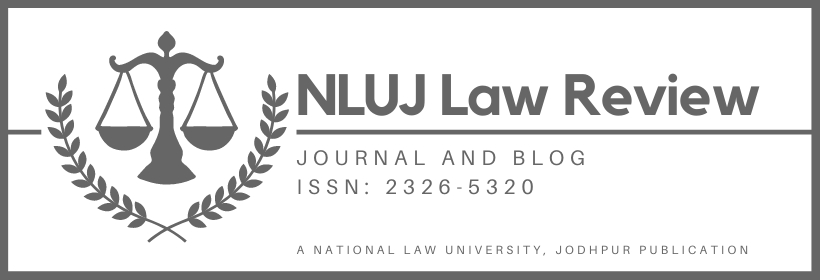The COVID-19 pandemic has given a huge boost to virtual medical consultation worldwide, including India, ultimately leading to a rise of telemedicine. In this technology-reliant healthcare system, a patient in his interaction with the doctor uses a digital platform (website, applications etc.), which paves the way for this relationship by providing a medium for the exchange of information.
However, some corporations have started operating like e-commerce platforms by actively participating as a third party. These facilitators are often referred to as e-health platforms. Some of the prominent platforms are 1mg, Lybrate, Practo, Callhealth. In this blog, the authors discuss the various legal issues which stem from such an interaction.
Regulatory framework
Until recently, there was a lack of proper guidelines for these e-health platforms, which resulted in various ambiguities regarding legality of the practice of the telemedicine, registration of medical practitioners on such platforms, confidentiality of the information provided etc. However, their sudden increase forced the Board of Governors (“BoG”) of the Medical Council of India (“MCI”), empowered under Section 33 of the Medical Council of India Act, 1956 , to come out with the Telemedicine Guidelines (“Guidelines”) on 25 March 2020 so as to regulate this issue properly. These guidelines were added as an Appendix 5 to the Indian Medical Council (Professional Conduct, Etiquette and Ethics) Regulations, 2002, providing statutory basis to the Guidelines.
Point 5 of these Guidelines set out certain provisions which should be followed by such platforms:
5.1 The platforms must make sure that a patient consults a Registered Medical Practitioner (“RMP”), i.e., a medical practitioner registered with a national or a state medical council.
5.2 For every RMP listed on its platform, it is obligatory on the part of the platform to perform a due diligence exercise regarding their name, qualification, registration number and contact details. The platforms must also provide these details to patients.
5.3 If the practitioner fails to provide the required details as stated above, it is imperative for the technology platform to report it to BoG , in supersession to MCI which may take suitable action.
5.4 The platforms using artificial intelligence are prohibited to advise patients, and only an RMP can be consulted.
5.5 They have to ensure that there is a proper mechanism for the redressal of queries of the end customer.
5.6 In case of violation of the Guidelines, the platform will be blacklisted by BoG, which will stop its use by any medical practitioner.
Issues at hand
The Guidelines seem inadequate in addressing few pertinent legal issues that arise with regards to these e-health platforms. These issues are set out below:
A. Jurisdiction
A patient can have grievances against both a medical practitioner as well as an e-health platform, both of whom might be in a jurisdiction different from that of a patient. Since the Guidelines are silent as to the place of jurisdiction in case of any dispute, the platforms might use unfair clauses in their terms and conditions against the patients.
However, in Ranju Aery v. Spice Jet Limited, the National Consumer Disputes Redressal Commission, (“NCDRC”)held that, if acceptance of the contract is conveyed on the internet, then the cause of action for the purposes of consumer’s complaints will arise at the complainant’s place of business.
The aforementioned decision of NCDRC applies in-toto to e-health platforms and hence helps in clearing up the air in this regard.
As it is apparent that these platforms always have an upper hand over vulnerable consumers because a consumer has to either accept their terms and conditions or leave the service, there exists a massive difference in the bargaining power of the parties involved. Therefore, the Guidelines should not have left this question unaddressed and should have unequivocally provided that, in all disputes, cause of action will lie at the patient’s place so as to make things lucid.
B. Exemption as intermediaries?
Section 2(1)(w) of the Information Technology Act, 2000 (“IT Act”) states that the term intermediary refers to a person who receives, stores or transmits an electronic record on behalf of another person. Section 79(1) of the Act, provides that if an intermediary hosts any third party communication link, data or information, it shall not be liable for the same.
To get the exemption provided under Section 79(1), companies need to fulfil the criteria provided in Section 79(2) of the IT Act, i.e., the intermediary must not initiate/select a receiver for/modify the information in the transmission.
In Christian Louboutin v. Nakul Bajaj[i], the Delhi High Courtheld that “any active contribution by the platform or online marketplace completely removes the ring of protection or exemption which exists for intermediaries under Section 79.” In Amway India Enterprises Pvt. Ltd. v. 1Mg Technologies Private Limited, the Delhi High Court while dealing with the liability of e-health platforms inter alia other e-commerce platforms upheld the above principle.It was further held that these platforms should not be allowed to claim to be just an intermediary while earning profits by charging facilitating and services fees in the form of commission.
These platforms by suggesting varied options of RMPs on their platforms to the consumer help in initiating the transmission act as an active facilitators. Hence, they should not be allowed to claim exemption as an intermediary. The Background section of the Telemedicine Guidelines provides that before the issuance of the Guidelines, there existed a legislative lacuna and telemedicine was being governed by IT Act among other laws. Although the intent was to make a specific law to govern the practice of telemedicine, the Guidelines fail in providing an elaborate framework as to the duties of these platforms as an intermediary towards its users.
Vicarious Liability
In a plethora of cases, consumer forums have made e-commerce platforms liable for the deficiency in services provided to consumers. The State Consumer Dispute Redressal Commission (“SCDRC”) Chandigarh in Amazon Seller Services Private Limited v. Gopal Krishan, categorically held that “an agent, who sells a product, is duty bound to ensure its quality, and if the product is found defective, the agent shall be vicariously liable for the loss caused to the purchaser, along with the manufacturer of the product.”
The NCDRC has noted this principle with approval in M/S. Hello Travel v. Harish C. Jain. It was argued by the online portal that they should not be made liable for the deficiency in the services of a travel agency because it was merely an intermediary. The NCDRC held that the online portal cannot escape the liability by stating that it was not privy to the negotiations as it was its duty to ensure the quality of services being provided on its platform.
Further, medical services were held to be within the ambit of expression ‘services’ as defined in Section 2(1)(o) of the Consumer Protection Act 1986 (“CPA”), in the case of Indian Medical Association v. V.P. Shantha[ii]. Therefore, for the purpose of CPA, patients are entitled to similar protection as other consumers.
Accordingly, while the consumer forums have evidently shown an inclination towards making online platforms liable for any deficiency of services of third parties, the current Guidelines are silent on the liability of these platforms in case of any kind of medical negligence by the practitioners. The authors are hopeful that these forums will protect the rights of the patients in a similar manner.
Deficiency of service in these cases might be fatal for the patients. Taking that into account, the Guidelines should have provided for an elaborate clause elucidating the liability of these platforms and remedies thereof.
Criminal Liability
A topical question that arises with the mushrooming of e-health platforms is their liability for the criminal wrongdoings of the RMPs. In the case of Deepa Sanjeev Pawaskar and Anr, v. State of Maharashtra[iii], the Bombay High Court held that a doctor giving consultation over a phone call was liable for gross negligence. As there was no proper examination of the patient in this case, the court went on to hold that “prescription without proper diagnosis is culpable negligence”. Since telemedicine consultations are done virtually without any form of physical diagnosis, this raises the risk of being grossly negligent.
However, in Sham Sundar and Ors. v. State of Haryana[iv], the Supreme Court of India held that “there is no vicarious liability in criminal law unless the statute takes that also within its fold”. This raises the issue of liability of such platforms in case an RMP acts in grossly negligent manner on them as because they can’t be made vicariously liable. As the platforms don’t act gratis and act as an active facilitator, cases involving gross medical negligence require that a specific provision must be included in the Guidelines itself to make these platforms liable, to ensure that the victim is not undercompensated.
Conclusion
India has 1 doctor for every 1,457 citizens, and telemedicine can be an answer to our medical infrastructure problems. The Guidelines are a step forward for regulating telemedicine but have failed to provide a comprehensive framework for e-health platforms. As negligence in these cases can result in the death of a patient, e-health platforms cannot be regulated by the same generic laws as are applicable to e-commerce platforms, and thus, require stricter and exclusive parameters to regulate them.
The Guidelines were introduced with the intent to clear up the air regarding telemedicine. However, the authors believe that they are not concise enough to govern the e-health platforms. These Guidelines need urgent revision and should specifically provide for a clause which entails liability of the platforms and the damages to be paid in case of negligence of an RMP.
[i] 253 (2018) DLT 728.
[ii] 1995 SCC (6) 651.
[iii] Criminal Anticipatory Bail Application No. 513 of 2018.
[iv] 1989 SCR (3) 886.
This article has been authored by Suyash Tiwari and Rahul Sawadia, students at Hidayatullah National Law University, Raipur.



